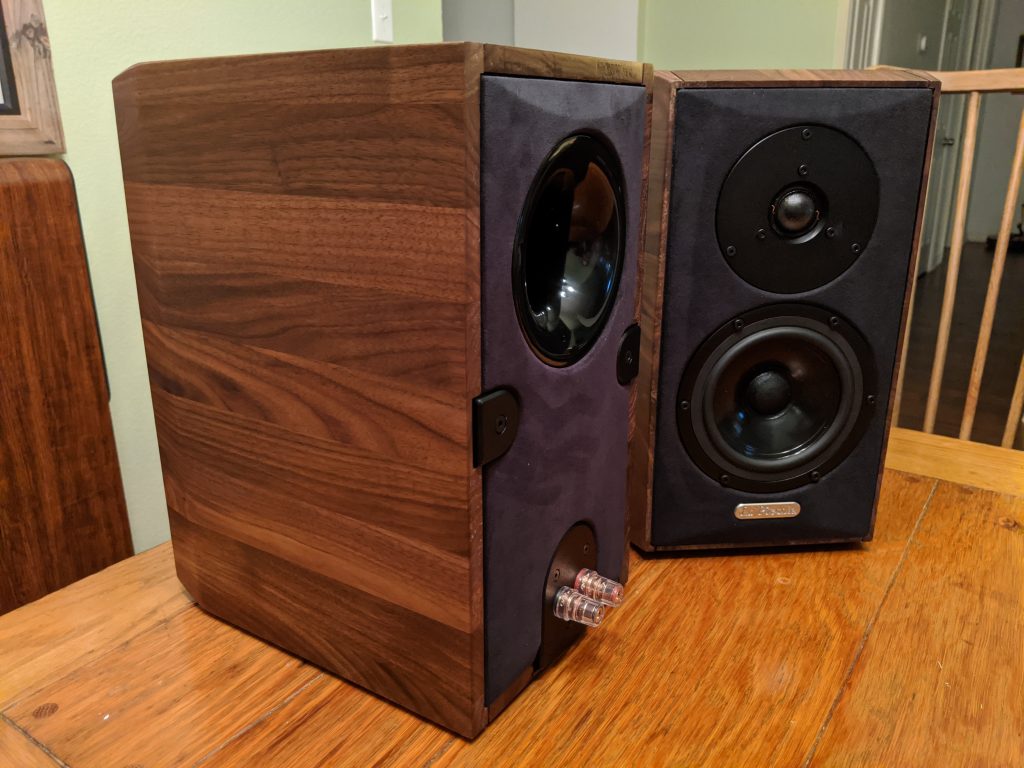In recent years, I’ve found myself becoming more and more a fan of stand-mount monitors. Indeed, there’s something seductive about a well executed two-way. The only problem, as many will be quick to point out, is the need to supplement such speakers with a subwoofer. I won’t disagree – how would one expect something with a 5-6″ mid-bass driver to reach the lowest frequencies. In short, it won’t. It’s simply not possible unless you’re aware of physics unbeknownst to the rest of us.
What you can do though, is tune the speaker in a way that gives the impression that one need not apply for that low-end augmentation. And that brings me to today’s topic, the La Piccola by Arteluthe. It’s safe to assume that only those in the know are aware of this small outfit hailing from Canada. Robert Gaboury is its chief owner, designer, manufacturer, and distributor. Instead of repeating his life story, I highly suggest you check out his bio from his website here.
There, you can also look at his current and upcoming projects, including his latest and greatest Stiletto. I’m sure I’ll never get to hear or review it, but it’s high up on my wish list! Alright, enough day-dreaming, back to the Piccolas.
Fit and Finish worthy of Royalty

I could make it the subject of an entirely separate review, but the boxes these speakers came in are truly glorious, weighing more than the speakers themselves. Robert obviously take the safe shipping very seriously, and it shows.
The boxes were the heaviest I’d ever seen, far surpassing the packaging of my more expensive reference speakers, the Rega RS10’s. Four screws need to be undone, then the box comes apart like a clam shell – very clever.
Did I mention how every and well done these boxes were? Upon their delivery, the mail person declared that they were far too fancy to house speakers, but instead had to be wine based on their weight. I have to say that I understand.
Upon opening the boxes, the speakers were inside heavy felt bags. There was a piece of paper that warned about exposed drivers, which is a good thing because I wouldn’t have known otherwise! To sum it up though, the unpacking experience is fit for royalty – the care and precision that went into these shows. It left me especially excited to get them setup and what else they had in store for me.
First Impressions Matter
I first received these at my place of work. There I have a humble two channel setup at my desk. It’s open air, and really presents a challenge for speakers that are ported in the rear when it comes to bass reinforcement. The nearest wall is fifteen feet away, so it’s always interesting to see how different speakers react without any real room interaction. I setup the speakers on my desk, using the IsoAcoustic stands that have graced that desk for more than three years now. The speakers they’re replacing are budget sealed monitors from Selah Audio. Cheaper, yes, but they house one of my favorite ribbon tweeters of all time. That’s another discussion for another time though, let’s talk about the Piccola’s. How did they fare in this challenging environment?
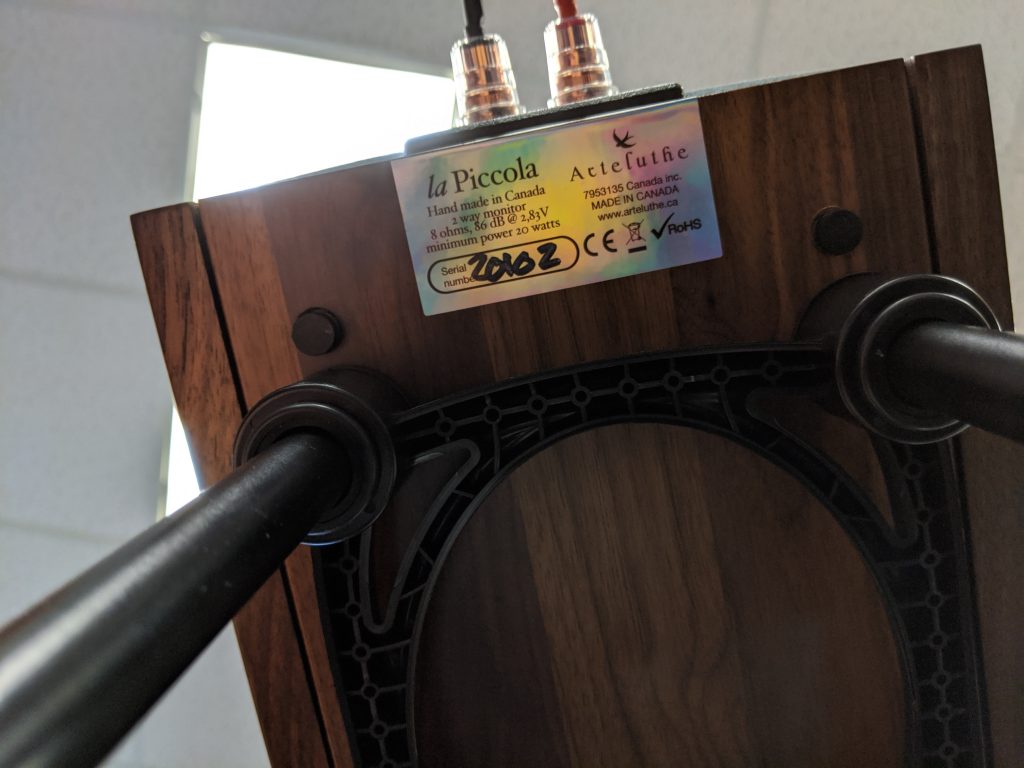
In a few words, they were stunning. This is great news for a first impression. I have a few songs that I like to make my way through to test a speaker. On that list is “Casimir Pulaski Day” by Sufjan Stevens. Unconventional they may be, I’m very familiar with them. That said, I had never heard a three-dimensional stage like that before.
I was starting to get goosebumps. Of all the monitors I had listened to in this exact setup, this was the first time that had happened. That’s saying something, since I’ve had the better part of forty or fifty monitors on those same stands. My next thought was “alright, game on”. As I proceeded through my test list of music, it became readily apparent to me that I would need to spend far more time with these than any pair that proceeded them.
The label for the speakers are on the bottom, which is a nice touch. It’s there when you need it, but otherwise out of sight and doesn’t detract from the otherwise beautiful presentation. Also on the bottom are screws that allow the speakers to be attached to dedicated stands. As I didn’t order the stands though, the screw holes were covered with rubber stoppers.
Home at Last
After packing up the speakers, I headed home with them. As I brought them in the house, I remember my wife exclaiming about the “robustness” of the boxes. I hadn’t told her about the boxes, it must have slipped my mind. Oops.
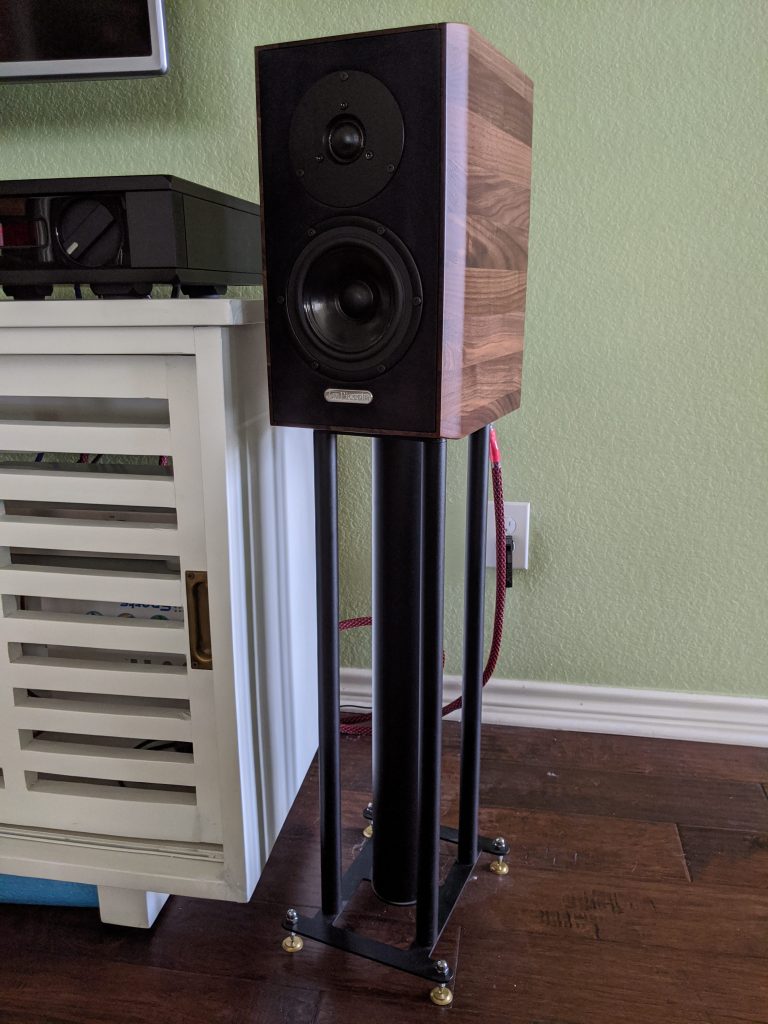
I’ll admit it took me a fair bit longer to set these up in my reference system than I was used to. Part of that was due to the room, but most of it due to the restrictions placed upon the placement of speakers by my lovely wife. You know what they say – happy wife, happy life.
Restrictions aside, I found two configurations that worked well in my room and it took some time to come to a decision. The first configuration had them firing straight ahead without any toe-in and about two feed from the back wall. I’ll talk about it later, but you do not want these monitors any closer than that. The second configuration saw them moderately toed-in as if they were aiming 4-6 feet behind my head.
Comparing the two directly, I slightly preferred the latter (with toe-in) when it came to sound stage as it seemed a little more pin-point accurate. The former though seemed far superior in overall top-to-bottom balance, especially when it came to low-end response. I suspect there were some nasty room interactions happening with the high end response, because I wasn’t able to recreate the brightness in other parts of the house.
Now… before I get into the meat of the review though, let’s talk specifications.
Specifications
A quick note on specifications. According to the manual, the La Piccola is a “2-way, bookshelf loudspeaker system” that features a “tuned and vented double walled enclosure.” The double walled part is important. There are brackets inside the cabinet that aren’t at a perfect 90 degree angle. The effect this has on the cabinet is putting it under a constant stress, thus moving resonant frequencies even higher in the audio band. I’ve never seen anything like it, and while not scientific, I can attest to the inertness of the cabinet while playing music.

The tweeter is a 29mm (~1.14″) silk soft-dome that’s decoupled from everything else. On mid-bass duty is a 155mm (6″) doped paper mid-bass driver. The driver is loaded with a bass reflex port on the back that’s nearly big enough to fit my hand in. Indeed, in the manual, it’s stated that the port was enlarged to prevent any chuffing. What this means though is that the speakers like being placed a little bit further from the wall.
The crowning jewel though is the crossover. Instead of a traditional parallel crossover that a majority of manufacturers use due to its ease of design, Robert of Arteluthe spent more than two years perfecting a serial crossover for the La Piccola. What makes it special is how the drivers interact with each other.
Instead of dividing up a signal into its high and low pass components, the entire signal is (more or less) passed through both drivers. Robert claims that both measure nearly identically, but he preferred the sound of the serial. More information about serial crossovers can be found here. Finally, the come in at a cost of $5000 USD / Pair. That’s expensive for sure, but in the grand scheme of the audio market, it’s an amazing deal considering what you get.
A note about finishes. While mine is in a walnut finish with black alcantara baffles, piano white and black enclosures are also offered with either alcantara (choice of color) or black leather for the baffles. You can even mix and match if you desire.
System Notes and Setup
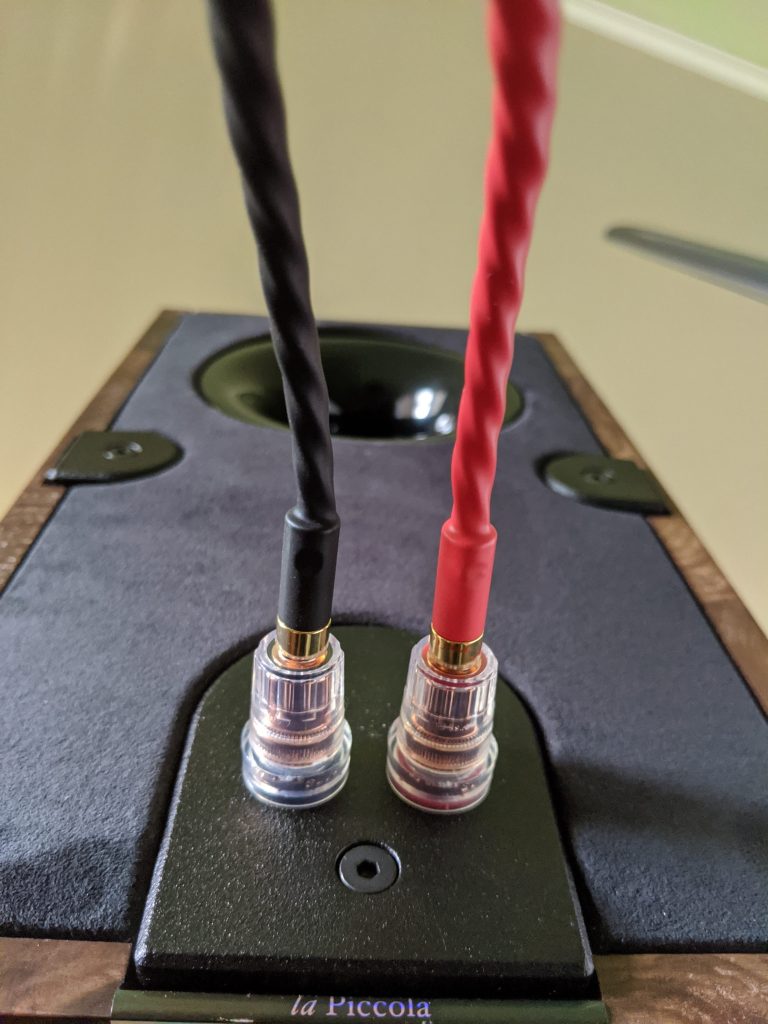
For a majority of my testing, I had the speakers setup in my reference setup. A quick run-through of the components before getting to the impressions. For the most part, the Piccolas were powered by the Rega Osiris.
On the digital side, I used a Raspberry Pi (for Roon) connected via USB to the venerable Audial S4. This has been a favorite combination of mine and is most likely to stay for the foreseeable future.
On the analog front, I have my Rega RP10 feeding a Rega Aria phonostage. The RP10 has been on a wall shelf now for the better part of 2020 and it’s made a huge improvement to the soundstage, far bigger than I had anticipated.
In addition to the Osiris, I also ran my reference tube pre-amp and monoblocks, the Triode Lab Au-Pre and EL84M-FFX’s. I’ll have additional notes about them below. I would have loved to have them in the system longer, but they make it hard to watch movies with the family so their time was limited. unfortunately.
Music, Music, Music
My favorite part, talking about the music. In the end, it doesn’t matter so much what components are used, only that you get to enjoy one of life’s greatest gifts, music.
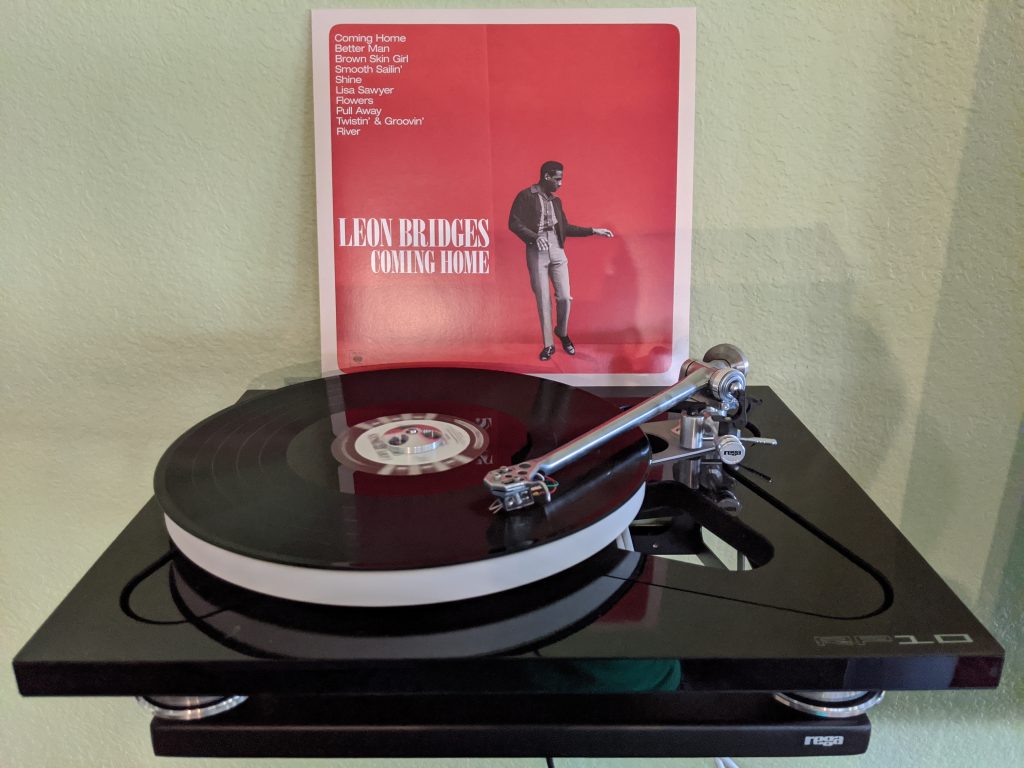
When it finally came time to sit down and really listen, I started with a personal favorite, “Coming Home” by Leon Bridges. Released nearly five years ago, it quickly became a favorite and in fact, the opening song is what my wife and I danced to at our wedding. Through the La Piccolas, I found rediscovering parts of the song that I previously hadn’t noticed. I’m not talking about a shimmer in the highs or anything like that. I’m talking about an inherent three-dimensional quality to the album that gets lost in lesser speakers.
All of the intricacies were there, but in a nuanced fashion that didn’t call attention to themselves immediately. While I don’t tend to describe speakers in this way, the word I’m definitely looking for in this case is “smooth”. The La Piccolas are just that – smooth. Listening through the entire album was a pure joy, so much so that I ran through the album a second time before moving on.
Changing paces, I decided to through something a little more energetic at them. The perfect candidate – A Moment Apart by Odesza. Their sophomore (or junior, depending on how you look at it) album is their most popular yet and catapulted them into the spotlight. By chance (or not), my favorite song from this album also features Leon Bridges: Across the Room
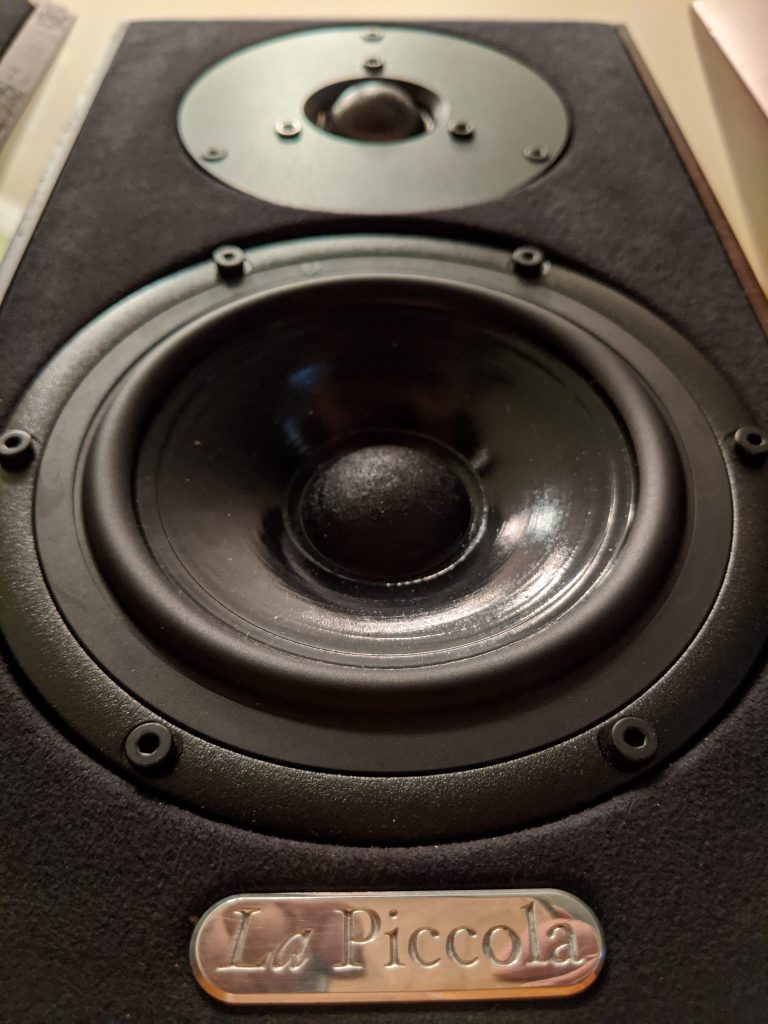
See a theme?
That’s not the only reason to listen to this album though. The album is pure bliss to listen to from beginning to end, and the beats keep up the right amount of energy. The title song is a perfect example of this, setting the tone for the rest of the album to come. When listening to this album though, what I look for from the speakers is excellent definition of the low-end. It really tests them to find just how low they can reach and how much control they have over that region.
When listening to this album though, what I look for from the speakers is excellent definition of the low-end. It really tests them to find just how low they can reach and how much control they have over that region.
As one might expect, the Piccolas are not floor-standing speakers. That said, they have far more bass that I ever expected from monitor its size, easily reaching into the mid 40’s. The great thing about this, is that it makes it even easier to blend with a subwoofer. You know what though? I didn’t feel like I needed it. That’s not to say that a subwoofer wouldn’t be beneficial, just that their bass output was enough that you could get by without it. In the right room, I definitely think they would be all you need.
Not only did they reach deep, but it was well defined as well. When I think of Odesza, I think of clean music. Well defined leading and trailing edges. It’s hard to get right, but these speakers nailed it.
It’s not often that you find speakers that remain clean and pure no matter the volume. And that’s a relief. Far too often do I see and hear speakers (monitors and floor-standers alike) that change their tonality as the volume changes. That’s a job well done for Arteluthe.
Tubes
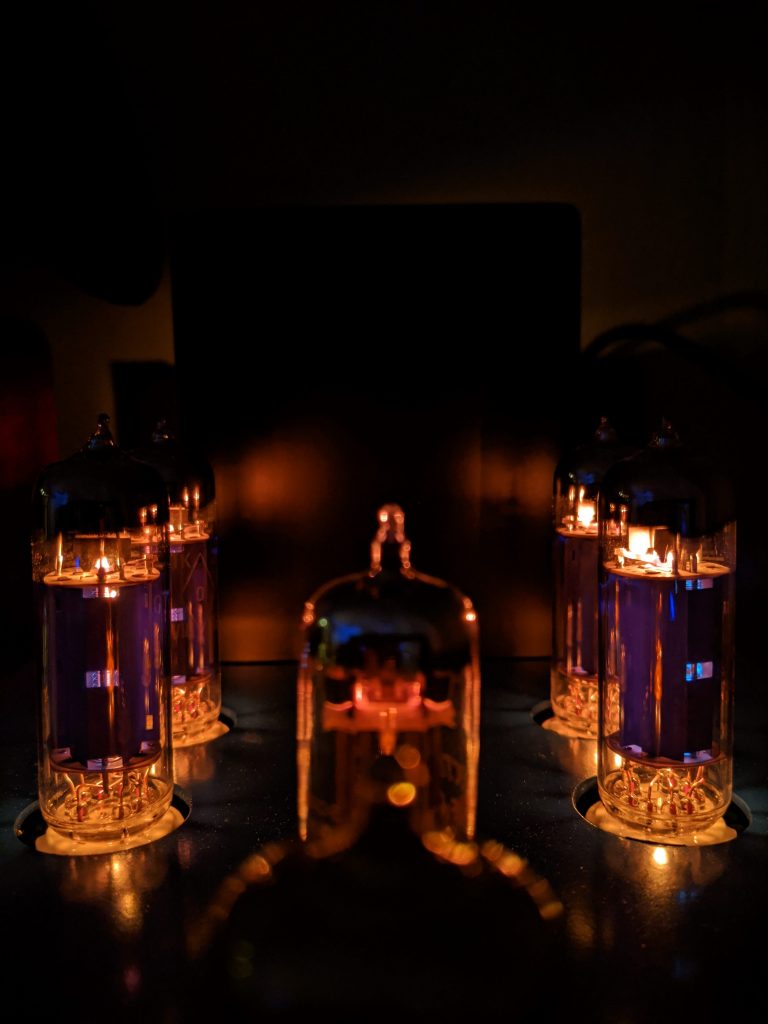
I promised a small segment about the Piccola’s with tubes, didn’t I? I’m an avid EL84 fan as some of my peers know, I think what it lacks in raw output it more than makes up for in that tube “magic”. Just the right amount of sparkle in the vocal region does a lot.
I am lucky to have some of the best EL84 amplifiers I’ve ever heard in my life, the Triode Lab EL84M-FFX driven by their Au Pre Hi-Game pre-amplifier. Frank of Triode Lab (and its sister company, Finale Audio) is a true pleasure to work with. He truly believes in the product he’s been making over the last several decades and I have no hesitations recommending him to anyone seriously looking to get into vacuum tube amplifiers. Onto the music though!
My album of choice when listening to these wonderful tubes is a little off the beaten path for me, Melodrama by Lorde. I just can’t help it. Whereas with solid-state amplification, I definitely know that I’m listening to a recording, the vacuum tubes impart a sparkle that gives the impression that I’m getting a solo concert performance. Magic.
My favorite track from the album? Liability. The piano comes to life and I get goosebumps every time. I can’t say the same when I’m listening to this track through solid-state. I’m starting to think that maybe Frank and Robert had planned this all along. Maybe they knew all along that this speaker/tube combination was magic?
In Conclusion
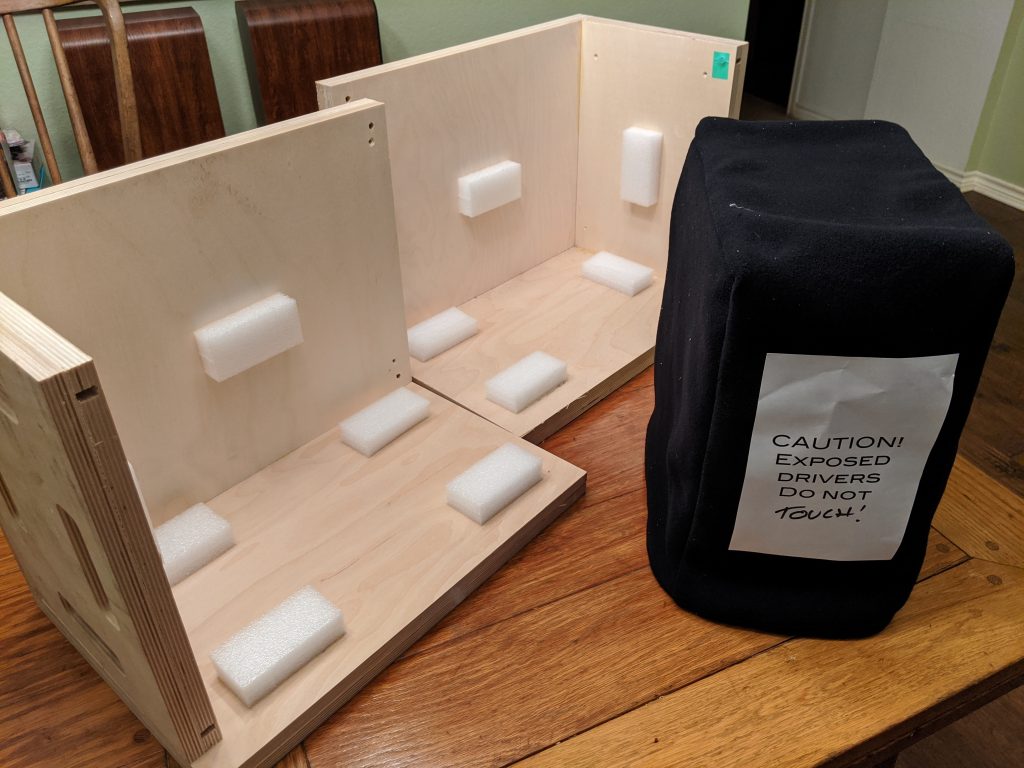
This is a late addition to my review. I’ve lived with these glorious monitors for a few months now and have gotten to know them even better. They have continued to impress and everyday I find myself looking forward to listening to them. The thing that keeps on impressing me though is the even bass and mid-bass response.
I still haven’t quite worked out what’s responsible for that – the driver, port, crossover, or a combination thereof. It has fleshed out even more and still makes me question the need for a subwoofer on regular two-channel content. That’s not to say I think a subwoofer is pointless, just that the monitors do a bewildering job for their size. They really push the boundaries of what’s possible in this form factor and redefine the gold standard of compact monitor performance.
I can say without a doubt that these are the best monitors I have ever heard at any price, even beating out some from the likes of far more “prestigious” brands that cost 2-3x the price. The La Piccolas are an easy recommendation to anyone seeking a top-tier monitor that plays with the big boys for mid-tier monies. It has been an absolute pleasure to listen to these monitors and I can’t wait to hear the next design from Robert at Arteluthe.

